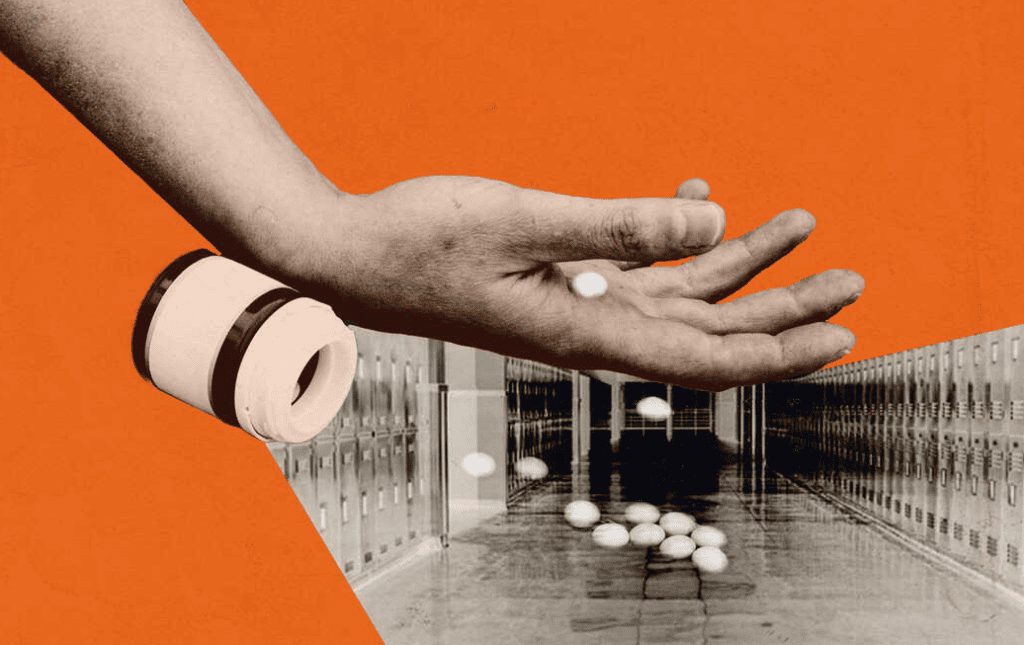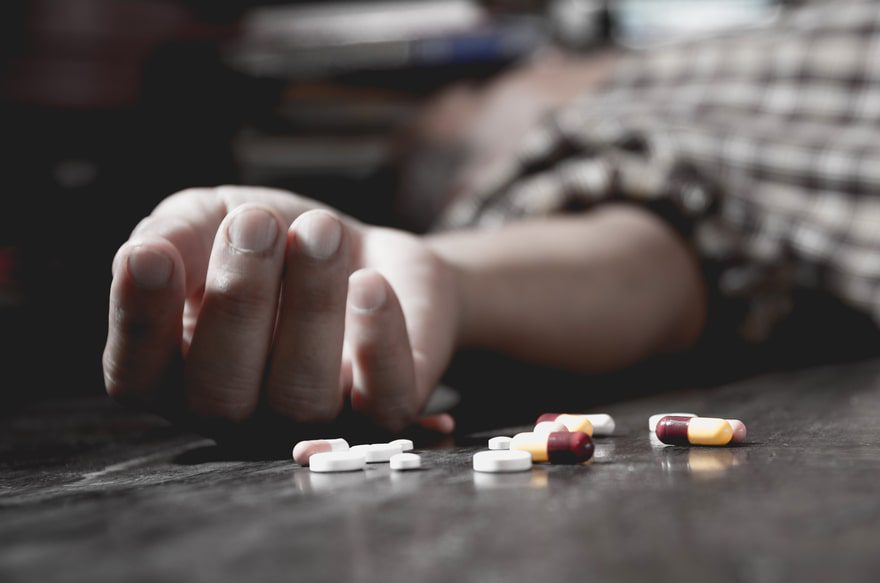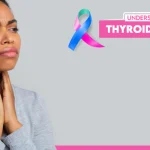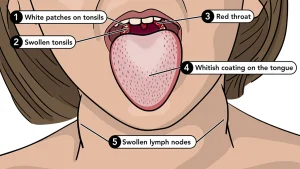
Understanding Prescription Drug Overdose
What is a drug overdose summary?
A drug overdose summary, especially in the context of prescription medications, holds immense significance in the realm of healthcare and public health. It serves as a detailed record of an overdose incident involving prescription drugs. This summary encapsulates critical information such as the type of medication, dosage, and any contributing factors that led to the overdose. With the rise in prescription drug use, understanding prescription drug overdose summaries has become paramount in ensuring patient safety and implementing effective prevention strategies.
One of the key aspects in comprehending a drug overdose summary, particularly involving prescription medications, is recognizing the complexity of modern healthcare. The vast array of available medications, each with its own set of potential side effects and interactions, underscores the need for precise documentation. This summary provides healthcare professionals with an immediate snapshot of what transpired during the overdose incident, allowing for swift and targeted intervention. For instance, in cases involving opioid painkillers, time-sensitive administration of naloxone, an opioid antagonist, can mean the difference between life and death.
Moreover, understanding prescription drug overdose summaries is instrumental in post-incident analysis. It enables healthcare providers to evaluate the effectiveness of the initial treatment and make informed adjustments for subsequent cases. In cases of prescription drug overdose, this analysis may involve assessing whether the prescribed dosage was appropriate for the patient’s condition or if there were underlying factors, such as concurrent medications, that contributed to the overdose. This feedback loop is crucial in refining prescription practices and enhancing patient safety.
In the broader context of public health, comprehending prescription drug overdose summaries sheds light on concerning trends and demographics. For example, research may reveal specific age groups or regions that are disproportionately affected by prescription drug overdoses. Armed with this information, communities can implement targeted educational campaigns and allocate resources effectively. Additionally, policymakers can use this data to inform regulations surrounding prescription drug use, with the aim of mitigating overdose incidents.
In conclusion, understanding prescription drug overdose summaries is paramount in today’s healthcare landscape. It empowers healthcare professionals to provide timely and effective care, facilitates post-incident analysis for continuous improvement, and informs broader public health initiatives. By delving into these summaries, we not only enhance patient safety but also work towards creating a more informed and resilient healthcare system.
What is the drug overdose crisis?
The drug overdose crisis is a sobering reality that has gripped societies worldwide. At its core, this crisis revolves around the escalating incidence of drug overdoses, with prescription medications playing a significant role. Understanding prescription drug overdose within the context of this crisis is imperative for devising effective strategies to combat it.
The crisis is characterized by a surge in the number of individuals succumbing to the effects of drug overdoses. While illicit substances like opioids and methamphetamines have long been associated with overdose incidents, an alarming trend has emerged involving prescription medications. These drugs, often prescribed for legitimate medical reasons, have become a double-edged sword. When misused or administered improperly, they can lead to devastating consequences.
Central to understanding prescription drug overdose in the midst of this crisis is the recognition of the multifaceted factors contributing to its prevalence. Accessibility is a significant concern. The ease with which prescription medications can be obtained, coupled with insufficient safeguards, has facilitated their misuse. Patients may receive prescriptions without adequate education on their potential risks and side effects, inadvertently contributing to overdose incidents.
Furthermore, the crisis underscores the importance of proper education and awareness campaigns. Healthcare providers, patients, and communities at large must be well-informed about the risks associated with prescription medications. This includes understanding proper dosage, potential interactions with other substances, and recognizing the signs of overdose. Enhanced education empowers individuals to make informed decisions regarding their medications and equips them with the knowledge to seek help when needed.
In addition, addressing the drug overdose crisis demands a collaborative approach from healthcare professionals, policymakers, and the community. Stricter prescription monitoring and guidelines, coupled with robust addiction treatment and mental health support, are critical components of an effective response. By fostering a comprehensive and compassionate approach, we can begin to stem the tide of this crisis and work towards a safer, healthier future for all.
Exploring Illegal Drug Overdose
Delve into the world of illegal drugs and their potential dangers. Get informed about the risks of overdose and how to stay safe.
How to control drug addiction in Pakistan?

Controlling Drug Addiction in Pakistan: A Comprehensive Approach
In Pakistan, as in many parts of the world, combating drug addiction is a critical societal challenge. The issue is exacerbated by the prevalence of illegal drugs, which contribute significantly to the country’s struggle with addiction. To address this complex problem, it is crucial to adopt a multifaceted approach that encompasses prevention, treatment, and rehabilitation.
One pivotal step in controlling drug addiction in Pakistan is through rigorous enforcement of anti-drug laws. This includes cracking down on illegal drug production, trafficking, and distribution networks. Strengthening border controls and cooperating with neighboring countries to curb the flow of narcotics is essential. Additionally, law enforcement agencies must work in tandem with local communities to identify and dismantle drug dens and operations, thereby disrupting the supply chain.
Education and awareness campaigns play a pivotal role in preventing drug addiction. By targeting schools, colleges, and communities, these initiatives aim to educate individuals about the dangers of drug use and the potential consequences of addiction. It is crucial to highlight not only the physical and mental health risks associated with drug abuse but also the legal ramifications. These campaigns can also focus on destigmatizing addiction, encouraging open conversations, and promoting healthier coping mechanisms.
Exploring illegal drug overdose incidents is another crucial aspect of controlling addiction. This involves understanding the patterns and trends associated with overdose cases, which can provide invaluable insights for prevention strategies. Through detailed analysis, healthcare professionals and policymakers can identify high-risk demographics, specific substances of concern, and potential gaps in intervention. Armed with this information, tailored prevention and education programs can be developed to address the unique challenges faced by different communities.
Treatment and rehabilitation facilities play a pivotal role in helping individuals overcome addiction. It is imperative to invest in accessible and quality treatment centers staffed by trained professionals. This includes medical detoxification, counseling, and therapy sessions to address both the physical and psychological aspects of addiction. Moreover, support groups and community-based programs offer a crucial lifeline for individuals in recovery, providing them with a network of peers who understand their struggles.
In conclusion, controlling drug addiction in Pakistan requires a concerted effort from all sectors of society. By enforcing strict anti-drug laws, implementing robust education and awareness campaigns, and exploring illegal drug overdose incidents for targeted prevention, we can make significant strides in curbing addiction. Additionally, prioritizing accessible and effective treatment and rehabilitation facilities ensures that those struggling with addiction have the support they need to reclaim their lives. Together, we can create a healthier and more resilient Pakistan.
Immediate Actions for Drug Overdose
What is the immediate treatment for overdose?

When faced with a drug overdose, time is of the essence. Immediate intervention can mean the difference between life and death. Understanding the crucial steps to take in these critical moments is paramount for both healthcare professionals and bystanders.
The first and foremost immediate action for drug overdose is to call for emergency medical assistance. Dialing the local emergency number or contacting your nearest healthcare facility is the priority. Swiftly providing accurate information about the situation, including the type and amount of substance involved, is crucial for the dispatchers to relay pertinent instructions to the first responders.
While waiting for professional medical help to arrive, it’s imperative to assess the individual’s vital signs. Check for signs of breathing difficulties, irregular heartbeat, or loss of consciousness. If the person is not breathing or has a weak pulse, initiating CPR (cardiopulmonary resuscitation) is critical. This can help maintain oxygen flow to the brain and other vital organs until professional help arrives.
If the overdose involves opioids, such as heroin or prescription painkillers, administering naloxone can be life-saving. Naloxone is an opioid antagonist that rapidly reverses the effects of opioid overdose. It can be administered through intranasal spray or intramuscular injection. It’s crucial to follow dosage guidelines and administration instructions provided with the naloxone kit. Moreover, it’s important to stay with the individual after administering naloxone, as its effects may wear off before professional help arrives.
Another immediate action for drug overdose is to position the affected individual in the recovery position. This involves turning them onto their side, which helps prevent choking in case of vomiting and ensures an open airway. Keep monitoring their breathing and pulse while waiting for professional assistance.
In addition to these critical steps, it’s essential to provide a clear account of the events leading up to the overdose to healthcare professionals when they arrive. This information can assist in tailoring further treatment and ensuring the individual receives the appropriate care.
In conclusion, understanding the immediate actions for drug overdose can be the key to saving a life in a critical situation. Calling for emergency medical assistance, assessing vital signs, administering naloxone (if opioids are involved), and placing the individual in the recovery position are pivotal steps. Being prepared and knowing how to respond swiftly can make a significant difference in the outcome of an overdose incident.
Seeking Help for Drug Overdose Recovery
What happens in hospital after an overdose?
After an overdose, seeking prompt medical attention is crucial for the individual’s well-being and recovery. Upon arrival at the hospital, the affected individual is immediately assessed by a team of healthcare professionals trained in handling overdose cases.
The initial evaluation involves a thorough examination of vital signs, including heart rate, blood pressure, and respiratory rate. This helps gauge the severity of the overdose and provides essential information for determining the appropriate course of treatment. In cases where the individual’s breathing is compromised, they may be placed on respiratory support to ensure adequate oxygen levels.
Blood tests are often conducted to identify the specific substances involved in the overdose. This information is invaluable for tailoring treatment and providing targeted care. It also helps healthcare providers anticipate and address any potential complications associated with the substances ingested.
Depending on the nature and severity of the overdose, the individual may be admitted to an intensive care unit (ICU) for close monitoring. This is particularly common in cases involving potent substances or when multiple substances are involved. In the ICU, continuous monitoring of vital signs and specialized care are provided to stabilize the individual and address any immediate threats to their health.
Psychosocial support is a critical component of recovery after an overdose. A mental health assessment is often conducted to evaluate the individual’s emotional well-being and identify any underlying mental health issues that may have contributed to the overdose. This assessment helps guide appropriate interventions, which may include counseling, therapy, or referral to a mental health specialist.
Throughout the hospital stay, the individual’s progress is closely monitored. This includes regular assessments of vital signs, as well as ongoing evaluation of organ function and overall well-being. The goal is to ensure a safe and steady recovery, addressing any complications or concerns as they arise.
As the individual stabilizes, discussions about post-discharge care and follow-up plans begin. This may involve referrals to addiction treatment programs, counseling services, or outpatient care. The aim is to provide comprehensive support for the individual’s recovery journey, addressing both the physical and emotional aspects of their experience.
In conclusion, seeking help for drug overdose recovery involves a coordinated and comprehensive approach in the hospital setting. From initial assessments and medical interventions to psychosocial support and post-discharge planning, the focus is on stabilizing the individual and providing the necessary resources for a successful recovery journey. This holistic approach not only addresses the immediate effects of the overdose but also lays the foundation for long-term well-being and resilience.
Educating for Drug Overdose Prevention
How do you help someone overdose?
Naloxone, often referred to by its brand name Narcan, is a crucial medication in the realm of overdose prevention. It is an opioid receptor antagonist, meaning it rapidly reverses the effects of opioid overdose. When administered promptly, naloxone can be a life-saving intervention.
Naloxone works by binding to the same receptors in the brain that opioids attach to. By doing so, it displaces the opioids and temporarily restores normal respiratory function. This is vital in overdose situations where respiratory depression is a primary concern. It essentially gives the affected individual a second chance at life.
One of the key advantages of naloxone is its user-friendly administration. It can be administered intranasally through a nasal spray or through intramuscular injection. This makes it accessible to a wide range of individuals, including bystanders who may come across someone experiencing an overdose. Training programs and education initiatives play a crucial role in empowering communities to effectively administer naloxone.
Furthermore, it’s important to note that naloxone is safe and does not pose any risks to individuals who may mistakenly receive it. Even if administered to someone who is not experiencing an opioid overdose, naloxone will have no adverse effects. This makes it a valuable tool in situations where uncertainty exists about the specific substances involved.
Education about naloxone and its availability is paramount in drug overdose prevention efforts. This includes training healthcare professionals, first responders, and community members on its proper use. Additionally, increasing access to naloxone through pharmacies, community organizations, and harm reduction programs is crucial. By equipping individuals with the knowledge and resources to administer naloxone, we take a significant step towards saving lives in overdose emergencies.
In conclusion, naloxone is a cornerstone in drug overdose prevention. It acts swiftly to reverse the effects of opioid overdose, providing a vital window of opportunity for further medical intervention. Through education and widespread accessibility, naloxone empowers communities to take proactive steps in addressing the opioid crisis and ultimately saving lives.
Related Articles:
Conclusion
The conclusion of a drug overdose is a critical juncture that highlights the urgent need for comprehensive and proactive measures in the realm of substance abuse prevention and intervention. It serves as a stark reminder of the complex challenges posed by addiction and its potentially devastating consequences.
At this critical point, it becomes abundantly clear that a multifaceted approach is necessary to address drug overdose effectively. This approach should encompass prevention through education and awareness campaigns, accessible addiction treatment and rehabilitation, and vigilant enforcement of anti-drug laws. Moreover, it necessitates a collective effort from healthcare professionals, policymakers, law enforcement agencies, and the community at large.
The aftermath of a drug overdose also underscores the importance of providing immediate medical attention and support. Swift intervention, including administering naloxone when opioids are involved, can be the difference between life and death. It emphasizes the need for widespread education on recognizing the signs of overdose and knowing how to respond appropriately.
Furthermore, the conclusion of a drug overdose should serve as a call to action for increased research and innovation in the field of addiction treatment. Understanding the underlying causes of addiction and developing more effective and accessible treatment options are paramount. Additionally, efforts to reduce the stigma surrounding addiction are crucial in encouraging individuals to seek help and support.
In essence, the conclusion of a drug overdose is a somber reminder of the profound impact that substance abuse can have on individuals and communities. It serves as a rallying cry for continued vigilance, education, and compassionate care in the ongoing fight against addiction. By addressing the root causes and implementing evidence-based interventions, we can work towards a future where drug overdoses are minimized, and individuals struggling with addiction receive the support they need to lead healthier, more fulfilling lives.
Explore our more links
FAQ’s
What is a drug overdose?
A drug overdose occurs when an individual consumes a quantity of a substance, whether legal or illicit, that exceeds the body’s ability to metabolize or process it. This can lead to a range of adverse effects, including severe health complications or, in extreme cases, death.
What are the common signs of a drug overdose?
Common signs of a drug overdose may include difficulty breathing, erratic or slowed heartbeat, loss of consciousness, extreme confusion, seizures, vomiting, and in some cases, hallucinations.
What should I do if I suspect someone is experiencing a drug overdose?
If you suspect someone is experiencing a drug overdose, it is crucial to seek immediate medical attention. Call your local emergency number or take them to the nearest hospital. While waiting for professional help to arrive, monitor their vital signs, attempt to keep them conscious and breathing, and provide any relevant information about the substances involved.
What is naloxone and how does it work in overdose situations?
Naloxone, also known as Narcan, is a medication used to rapidly reverse opioid overdose. It works by binding to the same receptors in the brain that opioids attach to, displacing the opioids and temporarily restoring normal respiratory function.
Can naloxone be administered by non-medical personnel?
Yes, naloxone can be administered by non-medical personnel, including bystanders who may come across someone experiencing an opioid overdose. It is available in user-friendly forms such as nasal spray and intramuscular injection, making it accessible to a wide range of individuals.
How can drug overdose be prevented?
Drug overdose prevention involves a multi-pronged approach. This includes education and awareness campaigns about the risks of drug use, accessible addiction treatment and rehabilitation, strict enforcement of anti-drug laws, and widespread availability of naloxone for emergency intervention.
Are there long-term effects of surviving a drug overdose?
Surviving a drug overdose can have long-term physical and psychological effects. These may vary depending on the substance involved and the individual’s overall health. It is crucial for survivors to receive appropriate medical and psychological support for their recovery.
What resources are available for individuals struggling with substance abuse?
There are various resources available for individuals struggling with substance abuse, including addiction helplines, support groups, counseling services, and addiction treatment facilities. Seeking help from a qualified professional or a trusted individual is crucial for recovery.
Remember, if you or someone you know is in immediate danger due to a drug overdose, please seek help from a healthcare professional or call your local emergency number right away. They are trained to handle such situations and can provide the necessary assistance.






















